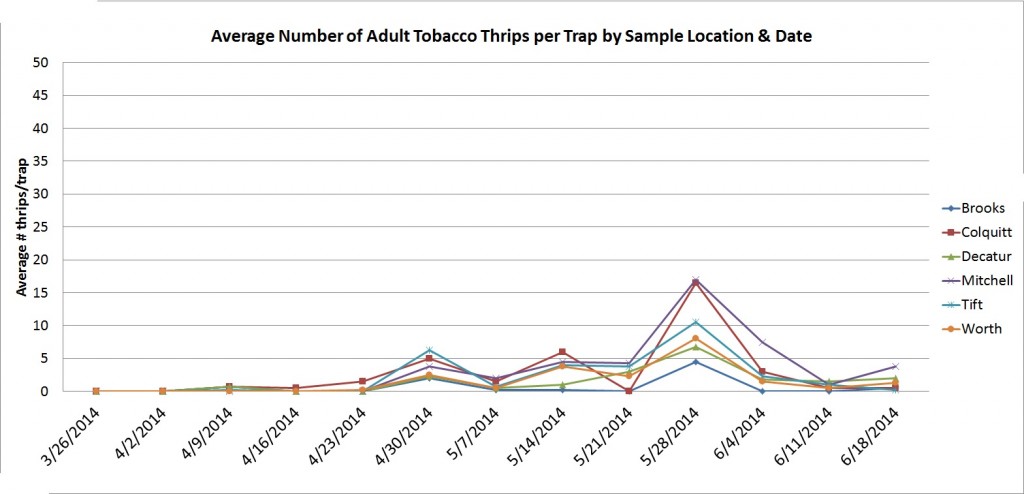There is some insect activity in GA peanut fields this week, and growers need to be watching fields for infestations and damage. The drier weather we are seeing in some areas creates favorable conditions for two of our most difficult to manage peanut pests: lesser cornstalk borers (LCB) and two spotted spider mites. Calls from southwest GA this week confirm that LCBs are present in some fields in that part of the state. We have also gotten a second-hand report of some spider mite infestations in the “dry corners” of irrigated fields.
There were a couple of foliage feeding caterpillar calls this week. One field in GA had populations of suspected tobacco budworm that required treatment. Growers should be aware that infestations of “heliothine” caterpillars are likely to predominantly tobacco budworm or at least a mix of budworm and corn earworm. Pyrethroids will not control tobacco budworm, so other chemistries should be considered if control is needed. Scott Monfort in South Carolina called this week with a report of high numbers of caterpillars in some peanut fields. Populations included a mix of corn earworm and/or tobacco budworm and armyworm species.
Thrips season is pretty much over for 2014. There may still be a few fields out there where damage is occurring, but adult dispersal is minimal, and we are seeing very little pressure in any of our research plots.
These data are being provided for informational purposes only and may not be representative of thrips dispersal at your location. Peanut fields should be scouted regularly to quantify actual thrips populations.
If you have questions about thrips or thrips management please contact your local county Extension agent.
*See 22 April post for a map of trap locations.
